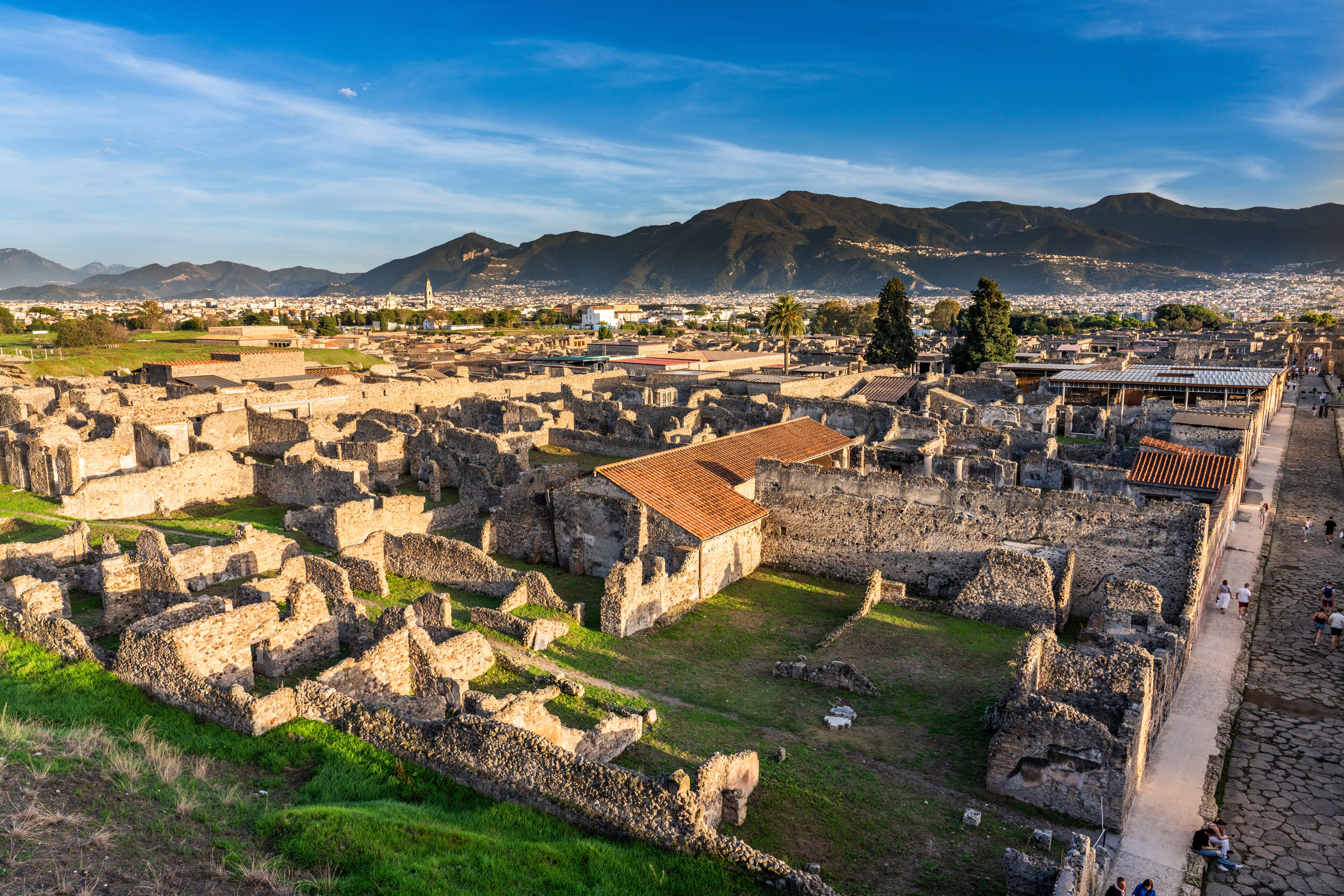Past Rebuilding Efforts

Amedeo Maiuri led restoring efforts of Pompeii and Herculaneum from 1924 to 1961. His goal was to restore the atmosphere of these towns to their pre-eruption state. He reconstructed many parts of the towns, rebuilding walls and roofs that had been destroyed. However, the materials used, like concrete and steel, ended up harming the original structures.
They caused crumbling walls and peeling of original paints due to chemical reactions. After the 1980s, better materials were used for rebuilding to prevent further damage.
In 1995, Pietro Giovanni Guzzo took over Pompeii's management, trying to improve conservation efforts. Despite these efforts, Pompeii faced challenges like degradation, mismanagement, and vandalism. Recognizing the severity of the situation, the Italian government declared a one-year state of emergency in 2008. They appointed a special commissioner to oversee conservation efforts.
Present Threats & Future

Pompeii's excavation, which began almost 300 years ago, continues today. As a UNESCO World Heritage Site, it holds global importance. The city's eerie ruins and remains of its last day attract scholars and tourists eager to explore a past frozen in time over 2,000 years ago.
However, time has not been kind to Pompeii. The volcanic ash that once protected the site has mostly been removed, exposing the ruins to harsh weather. Rainfall and landslides further damaged the structures, while light exposure harms ancient paintings and artifacts.
Pompeii is also known as a "dark tourist site" due to its link to death and trauma. It is one of the most visited UNESCO sites, attracting nearly three million visitors per year. This heavy foot traffic worsens the site's condition. Visitors' interactions with the ruins caused additional damage.
Theft is another problem, as some visitors take artifacts as souvenirs. Only two-thirds of ancient Pompeii, about 44 hectares, have been dug up. The remaining 22 hectares are still covered in debris from the eruption.
War has also left its mark on Pompeii. Bombing during World War II caused significant damage to the site. All these factors highlight the urgent need to protect Pompeii for future generations.
Conservation Challenges

Conserving Pompeii is not an easy task. Weather, pollution, and constant visitor traffic all take their toll. One notable incident was the collapse of the 2,000-year-old "House of the Gladiators" in 2010. Even though Mount Vesuvius hasn't erupted since 1944, it remains a looming threat.
To protect the ancient ruins and nearby communities, continuous monitoring and preparation are necessary.
Conservation Projects for Pompeii

The Great Pompeii Project
The project is an initiative launched by the Italian government in 2011. It aims to take action to protect Pompeii better. This involves developing a special urgent program of conservation, maintenance, and restoration. The project is funded by the European Union and national funds.
The Kress Pompeii Conservation Project
This Project was started in 1998 by the World Monuments Fund. It set new standards for preserving and showcasing the site. The project focused on buildings in an area called Insula V2, aiming to open it to the public later. The methods from this project helped plan how to protect the entire area.
Importance of Pompeii
Pompeii offers insights into ancient Roman life. The city has well-preserved Roman frescoes that vividly show the artistic expressions of the time. These paintings, with intricate details and vibrant colors, provide valuable insights into Roman culture, daily life, and social customs.
Ancient Town Planning & Land Use
In addition to its artistic treasures, Pompeii provides a unique opportunity to study ancient city planning and land use. Pompeii gives us a glimpse into how ancient cities were organized. Besides its beautiful artwork, it shows how they managed things like sewage and water. They had clever ways of designing streets to keep them clean and prevent muddy feet.
They had a system for managing sewage, using channels under the streets to carry waste away. This helped keep the city clean and prevent diseases. The streets were designed with raised sidewalks and stepping stones to help people cross when it rained. This kept the main paths dry and clean, making it easier to walk around the city.
Excavations since the mid-20th century have uncovered a surprising amount of open land. For example, the large area across from the Amphitheatre once believed to be the Foro Boario (Cattle Market), was revealed to be a vineyard.
Numerous vineyards, fruit trees, and gardens have been discovered throughout the city. This suggests that the population might have been smaller and the land use less intensive than previously believed.
Peek at the Ancient Roman World
Digs at Pompeii continue to uncover details of everyday life in a Roman city. The well-preserved remains offer insights into urban planning, social structures, and even what people did in their homes. Objects like tools and pottery help us recreate a picture of what life was like for Pompeii's residents.
Unique Learning
The ruins of Pompeii offer a valuable learning experience. They act like a bridge to the past. This allows visitors to see and understand Roman life in a way that wouldn't be possible through books or classrooms. Pompeii reminds us of the impact of natural disasters and why it's important to protect our cultural heritage.
By studying Pompeii, we can learn from the past and gain insights that can help us in the present and future.